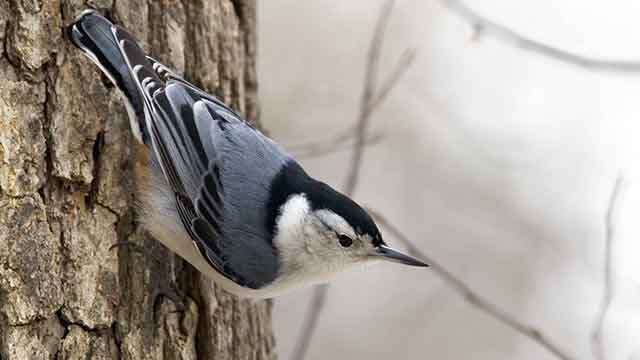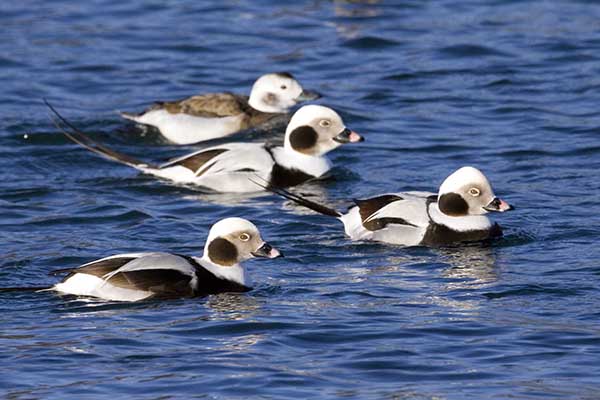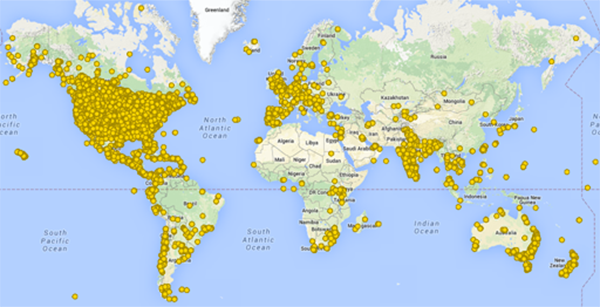Have you got 15 minutes to be part of something BIG?

Guest blog written by Bird Studies Canada's Toronto Projects Coordinator, Emily Rondel
What if you could be part of a global conservation project by standing in your yard (or local park, or well…anywhere) for 15 minutes?
This coming Family Day weekend (Feb 12-15), be part of the Great Backyard Bird Count (GBBC), a four day worldwide “blitz” of wild birds. The GBBC is an invaluable snapshot of worldwide bird abundance and distribution; and it’s only possible due to the participation of tens of thousands of “citizen scientist” volunteers around the globe. Participants range from bird experts to complete beginners, and together this crowd has created one of the most intriguing pictures of bird distribution on Earth.

Why is the GBBC important?
The GBBC is an example of the incredible potential of ‘citizen science’ in the digital age. While it’s true that dedicated volunteers have been counting birds for over a century, only the web could connect the dots, and participants, like the GBBC. Conceived of in 1998, just as the internet was available in most North American households, the project began as an experiment to test how the availability of an easy web platform could be used to collect mass amounts of bird data. The results surpassed all expectations, and the count has been growing ever since! Last year, more than 140,000 participants submitted their bird observations online from over 100 countries, creating the largest instantaneous snapshot of global bird populations ever recorded. The power of this crowd of bird lovers around the world meant that over half the world’s approximate 10000 species were observed.

What have we learned from the GBBC?
Data collected so far has helped scientists unravel how birds respond to seasonal weather patterns, food availability and disease. The kind of snapshot provided by the GBBC can also be a way to “take the temperature” of wild bird populations, perhaps identifying anomalies or trends that can be followed up on with more targeted research. In addition to this scientific benefit, the data shows the diversity and breadth of the international nature-loving community, connecting people from opposite sides of the planet in a single activity.
How do I take part?
Participants can go anywhere they like, note all the birds they recognize, and submit their results on the GBBC website. Fifteen minutes is the minimum amount of time necessary to take part, but longer counts are welcome too, and participants can count as many times as they like over the four day count window. Count birds in as many places and on as many days as you like—one day, two days, or all four days. Submit a separate checklist for each new day, for each new location, or for the same location if you counted at a different time of day. You can learn about the birds you might see in North America and get handy tips to identify them on the GBBC website (www.birdcount.org), or you can download a free app like Merlin to help you decipher which birds you encounter. Adding a bit of friendly competition to the count is the international photo contest. Remember - all bird sightings are good sightings; counting your local pigeons is just as important as noting rare or exotic species. In order to take a snapshot of all the birds on Earth, every bird counts, so count every bird!
The GBBC is a joint project of the Cornell Lab of Ornithology and Audubon, with Canadian partner Bird Studies Canada, and is supported in Canada by Armstrong Bird Food and Wild Birds Unlimited.
Interested in participating in other citizen science projects in Ontario? Visit Bird Studies Canada's website to see their local projects about Species At Risk like chimney swifts and nighthawks. You can also check out another initiative called the Ontario BioBlitz by visiting www.ontariobioblitz.ca, including its flagship event in the Credit Watershed June 11-12!
